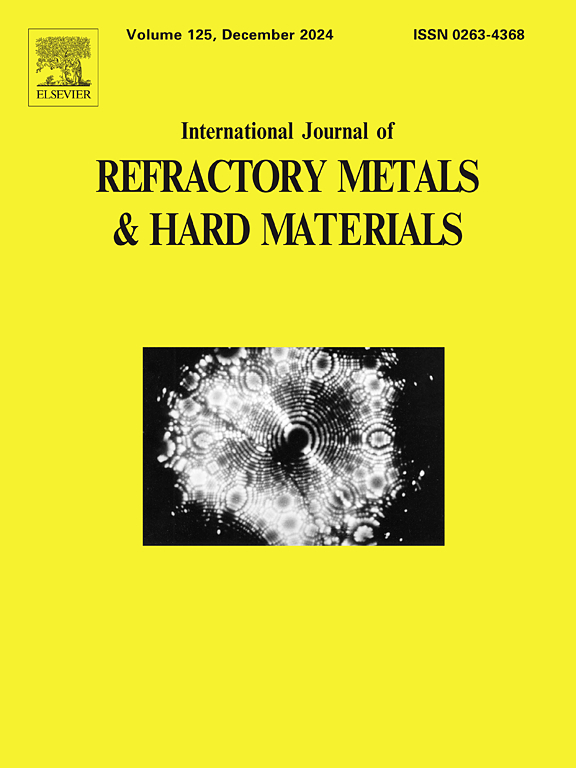High-temperature oxidation of TiNbTaVW RHEA: Oxide layer formation under parabolic behaviour
IF 4.2
2区 材料科学
Q2 MATERIALS SCIENCE, MULTIDISCIPLINARY
International Journal of Refractory Metals & Hard Materials
Pub Date : 2025-04-09
DOI:10.1016/j.ijrmhm.2025.107185
引用次数: 0
Abstract
The potential of refractory high entropy alloys (RHEAs) as high-temperature structural materials depends on optimising their oxidation resistance. This study examines the surface and cross-sectional oxide layers of TiNbTaVW RHEA after five hours of oxidation, comparing them to previously studied layers formed after 15 h. At 850°C, the surface and cross-sectional oxide layers remained crack-free after 5 h, in contrast to the cracked layers observed after 15 h. A crack-free oxide layer effectively slows oxidation by limiting oxygen diffusion. However, at 1050°C, cracks were present in the surface and cross-sectional oxide layers after 5 h, similar to those observed after 15 h. Understanding short-term oxidation mechanisms provides valuable insights for developing strategies to enhance the high-temperature oxidation resistance of RHEAs.
TiNbTaVW RHEA的高温氧化:抛物线行为下氧化层的形成
耐火高熵合金(RHEAs)作为高温结构材料的潜力取决于优化其抗氧化性。本研究检测了氧化5小时后的TiNbTaVW RHEA的表面和横截面氧化层,并将其与之前研究的氧化15小时后形成的层进行了比较。在850°C下,表面和横截面氧化层在5小时后保持无裂纹,与15小时后观察到的裂纹层形成对比。无裂纹的氧化层通过限制氧气扩散有效地减缓了氧化。然而,在1050°C时,5 h后表面和横截面氧化层出现裂纹,与15 h后观察到的裂纹相似。了解短期氧化机制为开发增强RHEAs高温抗氧化性的策略提供了有价值的见解。
本文章由计算机程序翻译,如有差异,请以英文原文为准。
求助全文
约1分钟内获得全文
求助全文
来源期刊
CiteScore
7.00
自引率
13.90%
发文量
236
审稿时长
35 days
期刊介绍:
The International Journal of Refractory Metals and Hard Materials (IJRMHM) publishes original research articles concerned with all aspects of refractory metals and hard materials. Refractory metals are defined as metals with melting points higher than 1800 °C. These are tungsten, molybdenum, chromium, tantalum, niobium, hafnium, and rhenium, as well as many compounds and alloys based thereupon. Hard materials that are included in the scope of this journal are defined as materials with hardness values higher than 1000 kg/mm2, primarily intended for applications as manufacturing tools or wear resistant components in mechanical systems. Thus they encompass carbides, nitrides and borides of metals, and related compounds. A special focus of this journal is put on the family of hardmetals, which is also known as cemented tungsten carbide, and cermets which are based on titanium carbide and carbonitrides with or without a metal binder. Ceramics and superhard materials including diamond and cubic boron nitride may also be accepted provided the subject material is presented as hard materials as defined above.

 求助内容:
求助内容: 应助结果提醒方式:
应助结果提醒方式:


